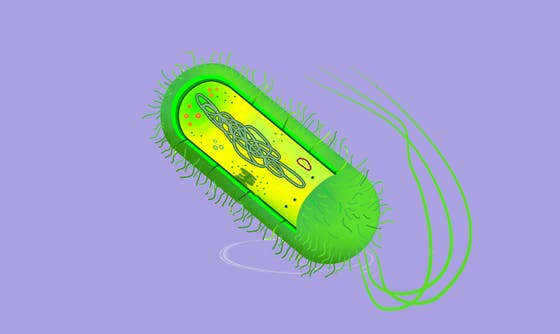Sep 28: New method improves tracking of AMR plasmid dissemination

In his PhD thesis, Julián Paganini (UMC Utrecht) developed a new approach to identify plasmids, mobile genetic elements that can transmit antimicrobial resistance from one bacterium to another. This new method has shown to be accurate when reconstructing plasmids of more than 70 bacterial species and has the potential to aid in identifying and tracking AMR in clinical settings at lower costs.
Genes that confer resistance to antimicrobials are frequently encoded by plasmids, extra-chromosomal mobile genetic elements that can be horizontally disseminated across bacteria by diverse mechanisms. Multiple studies suggest that plasmids are essential drivers of the spread of resistance within diverse ecological niches. Consequently, accurate plasmid identification and tracking are necessary to better understand the mechanisms that drive AMR dissemination.
Challenges in identifying plasmids
The development of next-generation sequencing (NGS) platforms has allowed the high-throughput study of bacterial genomes with an unprecedented level of accuracy. Illumina short reads remain the most widespread NGS technology worldwide. These platforms are highly accurate and large amounts of samples can be processed simultaneously, resulting in lower sequencing costs. Nevertheless, due to the frequent occurrence of large repeated elements, bacterial genomes are often fragmented in hundreds of smaller DNA sequences (contigs) of unclear origin (plasmid or chromosome). Consequently, determining the exact sequence of plasmids using short-read data is challenging.
A novel plasmid reconstruction method

The PhD work by Julian Paganini (Department of Medical Microbiology, UMC Utrecht) presents a novel two-step computational method for accurately reconstructing AMR-plasmids from bacterial NGS data. In the first step, contigs are classified as chromosomes or plasmids using an ensemble of binary classification tools called ‘plasmidEC.’ In the second step, plasmid-derived contigs are binned into individual plasmids using ‘gplas’, a tool that leverages sequencing coverage and assembly graph connectivity. Julián and his co-workers proved that this method outperforms other existing plasmid-reconstruction tools when tested in more than 70 different bacterial species. Furthermore, employing plasmidEC and gplas, they traced the dissemination of a tobramycin-resistance-carrying element among diverse Escherichia coli isolates sourced from patients admitted to intensive care units.
About the findings in his PhD project, Julián Paganini says: “Our initial focus involved evaluating the effectiveness of existing bioinformatic tools designed to reconstruct plasmids using short-read sequencing data. However, we observed that all these tools underperformed when attempting to predict AMR-carrying plasmids. This realization served as motivation for developing the methods presented in this thesis. Although we initially devised these approaches to be applicable only for the reconstruction of Escherichia coli plasmids, we later broadened their scope to encompass multiple species . This innovative approach has the potential to significantly enhance the cost-effectiveness and precision of tracking AMR spread. Having this information is expected to improve the containment of outbreaks in clinical settings.”
Antimicrobial resistance
Antimicrobial Resistance (AMR) occurs when bacteria, viruses, fungi and parasites change over time and no longer respond to medicines making infections harder to treat and increasing the risk of disease spread, severe illness and death. As a result of drug resistance, antibiotics and other antimicrobial medicines become ineffective and infections become increasingly difficult or impossible to treat. A recent estimate suggests that AMR is responsible for more than 1 million deaths globally per year, with six pathogens being responsible for the majority of cases: Escherichia coli, Staphylococcus aureus, Klebsiella pneumoniae, Streptococcus pneumoniae, Acinetobacter baumanii and Pseudomonas aeruginosa.
PhD defense

Julián Andrés Paganini (1988, Rosario, Argentina) defended his PhD thesis on September 27, 2023 at Utrecht University. The title of his thesis was “Reconstructing AMR plasmids – New methods to track the dissemination of mobile genetic elements in ICUs.” Supervisor was prof. dr. Rob Willems (Department of Medical Microbiology, UMC Utrecht). Co-supervisors were dr. Anita Schürch and dr. Nienke Plantinga (both Department of Medical Microbiology, UMC Utrecht). Julián will join the research group of Tim Dallman at the Institute for Risk Assessment Sciences (IRAS), part of Utrecht University, as a post-doctoral researcher working on the analysis of foodborne pathogens, such as S. enterica and E. coli.
